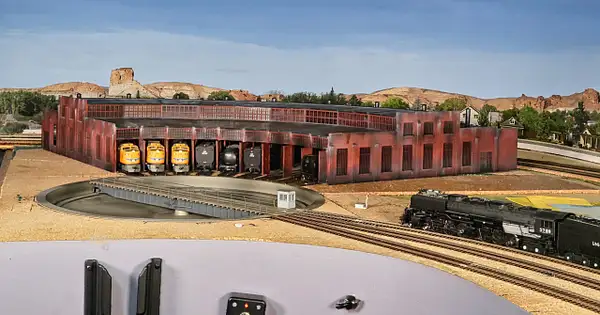Hanna Coal Marshaling Yard and employee houses
This also shows the Hanna stock yard for resting stock.
Old US Highway 30 crosses over the tracks here, and the white flat-building in the distance is the famous Virginian Hotel, where Owen Wister wrote the first ever full length western novel, "The Virginian." According to Wikipedia, "The novel revolves around the Virginian and the life he lives. As well as describing the Virginian's conflict with his enemy, Trampas, and his romance with the pretty schoolteacher, Molly Stark Wood, Wister weaves a tale of action, violence, hate, revenge, love, and friendship."
The 4 axle locomotive is permanently stationed in Hanna, because the curves in the mine region are too sharp for 6 axle power.




























No comments yet...
All fields are required, fill in the form.
Comment successfully added.
Comment